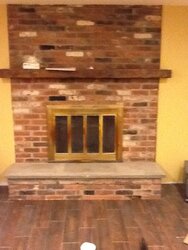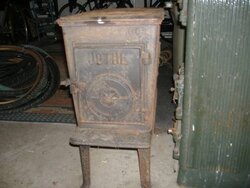For the past coupl of years I have been remodeling my basement, it used be an in law suite. I am almost finished and it will end up being almost 1100 square ft. About 850 is open space. I have a fireplace down there that I never use, I was thinking of putting a small stove in there as a space heater. I do not think this will heat my whole house, I just have become used to how a room feels with wood heat.. I also had the basement completely sprayed with spray foam, all walls and rim joists The floor is tile that looks like wood so it is not combustable


Now to my dilemma
1. New vs used
2. Small vs. medium
3. Insert vs hearth mount
4.... This will raise flags ,if go with an hearth mount installing it as a " slammer" or partial stove pipe
The run from the basement to the top of the flue is about 38 ft I am concerned that this is too much for an insert.
I have been reading a lot about the jotul 602 and I like it. I feel like it will do what I need, plus it just looks unique. I am attaching pictures of the hearth and a used 602 I found on line and I am looking for input.


Now to my dilemma
1. New vs used
2. Small vs. medium
3. Insert vs hearth mount
4.... This will raise flags ,if go with an hearth mount installing it as a " slammer" or partial stove pipe
The run from the basement to the top of the flue is about 38 ft I am concerned that this is too much for an insert.
I have been reading a lot about the jotul 602 and I like it. I feel like it will do what I need, plus it just looks unique. I am attaching pictures of the hearth and a used 602 I found on line and I am looking for input.
Last edited by a moderator:

